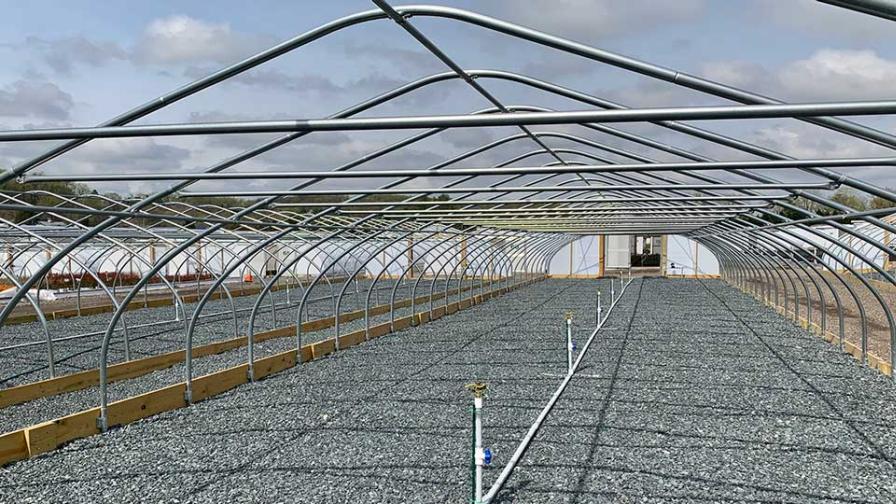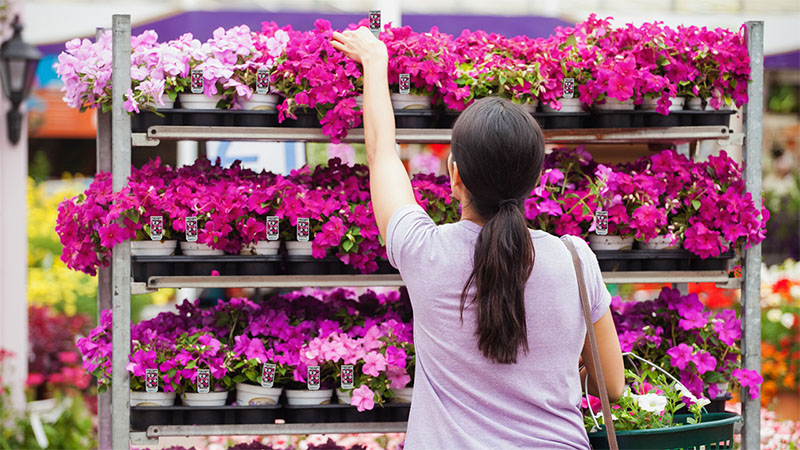Why Plant Shortages Are the Hort Industry’s Biggest Problem Today

Plant shortages are becoming a problem for all growers, including The Perennial Farm in Glen Arm, MD.
Photo by Allan Armitage
Whenever I am asked to take part in a horticulture industry discussion, as opposed to a plant customer discussion, invariably the conversation centers on problems. As healthy as our market is, as well as individuals have done, we can’t help ourselves — we are always trying to find a solution to the next big issue.
I have no doubt that one of the biggest problems facing us today is a serious shortage of plant material. This shortage crosses all boundaries, from trees and shrubs to perennials and even annuals.
Shortages have resulted from unforeseen weather problems (which always occur), but who would have dreamed that Southern states like Texas, Louisiana, and Georgia would have once-in-a-lifetime records of cold and snow? Nurseries in the South do not normally cover their crops, and even those that did suffered enormous setbacks and are at least six weeks behind.
But likely the biggest reason so few plants are available is because of the COVID-19 pandemic. A pandemic is supposed to result in the collapse of everything, and for a while, garden centers were closed, landscapers faced cancellations, designers saw orders evaporate, and retail outlets were empty. But only for a while.
Then, people realized that gardening, landscaping, and simply being outdoors were joyous ways to get out of the house and escape from a stalking virus. They thought about projects they had put off for years, and they did them. They planted gardens, hired a landscape person to work on a design, cleaned up the yard, and bought a ton of plants. Commercial and residential installers did the same, and as happy as the nurseries were to sell them, it became apparent that somewhere down the line, if demand kept increasing, plants would be in short supply. Sold out is a good problem to have, but it is still a problem, and in 2021, it has come back to haunt us.
Plant Retailers Feeling the Impact
I recently talked to Rick Watson, an authority in the nursery business and owner of The Perennial Farm, a large nursery in Glen Arm, MD. The nursery deals with independent garden centers and commercial landscapers and designers. Watson noted that 2021 began with a pent-up demand for plant material, and as a result of enhanced sales last year and the demand this year, he is seeing unheard of plant shortages.
“We are trying our best to let people know, but it is difficult to always be telling our customers to be flexible in their orders and open to plant substitutions,” he said. “Unfortunately, they will have to choose between substituting or not having plant material to complete the jobs.” Watson went on to say that not only is he seeing more orders, but the size of the orders has doubled or tripled in size.
Rick also bemoaned the fact that the news of plant shortages has not yet reached his buyers, particularly large landscapers looking for great numbers of half a dozen species.
“I try to tell them it is not just us, and as much as they dislike it, it quickly becomes apparent to them that this is an industry-wide problem,” Watson says. “It is quite frustrating.”
Shortages Likely to Linger
Grower’s Outlet in Loganville, GA, is a large, well-run retailer of plant materials in the Atlanta area. On her website, Marijke Tromp bemoans the industry-wide shortage of shrubs this year and asks customers for patience. She also is buckling down for major shortages from pot suppliers, increases in prices of soil and plugs, and protracted delays (six months and up to two years in tissue culture material).
Tromp finishes in much the same vein as Rick when she says, “Yes, we are having the best season I have seen in 30 years of managing garden centers, but I see a shakedown coming, and I am gathering my supplies so we can stay in the game.”
As I wrote this article in April, I saw far more plants than normal with limited or no availability listed on nursery websites.
Another extraordinary nurseryman is Alan Jones of Manor View Farm in Moncton, MD. Alan deals mainly in woody plant materials, and he echoes Tromp’s and Watson’s concerns.
“The strong demand is not just for perennials, but many species of trees and shrubs are not nearly as available as in years past,” says Jones, who also sees shortages in many materials, not just plants, associated with the nursery business. He mentioned that a supplier recently told him that new orders for nursery containers may take 12 to 14 weeks for delivery.
“Invariably with fuel, trucks, soils, and plastic costs rising, and the struggle of getting material ready to meet demand, there is no doubt growers will have to raise costs significantly,” Jones says.
These retailers, along with the rest of us, are looking into a very cloudy crystal ball and wondering if the increased demand will continue post-pandemic. Should we increase production and face a potential oversupply?
As Jones pithily asks, “Is it better to be sold out and wish you had more product, or have too much and have to cut prices to move it?”
This is no doubt a serious problem, but one we have faced before. Perhaps the pandemic has heightened awareness, but it surely seems like a tsunami from where people like Watson, Jones, and Tromp sit.
However, as with all pain, this too shall pass. I don’t believe we need a whitepaper to increase availability. The last thing we want to do is send out poor-quality roots because we are cutting corners on production to feed availability.
We must not lose sight of the fact that people of all walks of life are craving what we grow more than ever. As difficult as it may be, we must do what we do best: Grow, sell, and install a high-quality product. The rest will take care of itself over time.
If we do that, people will continue to buy, and we will catch up.









